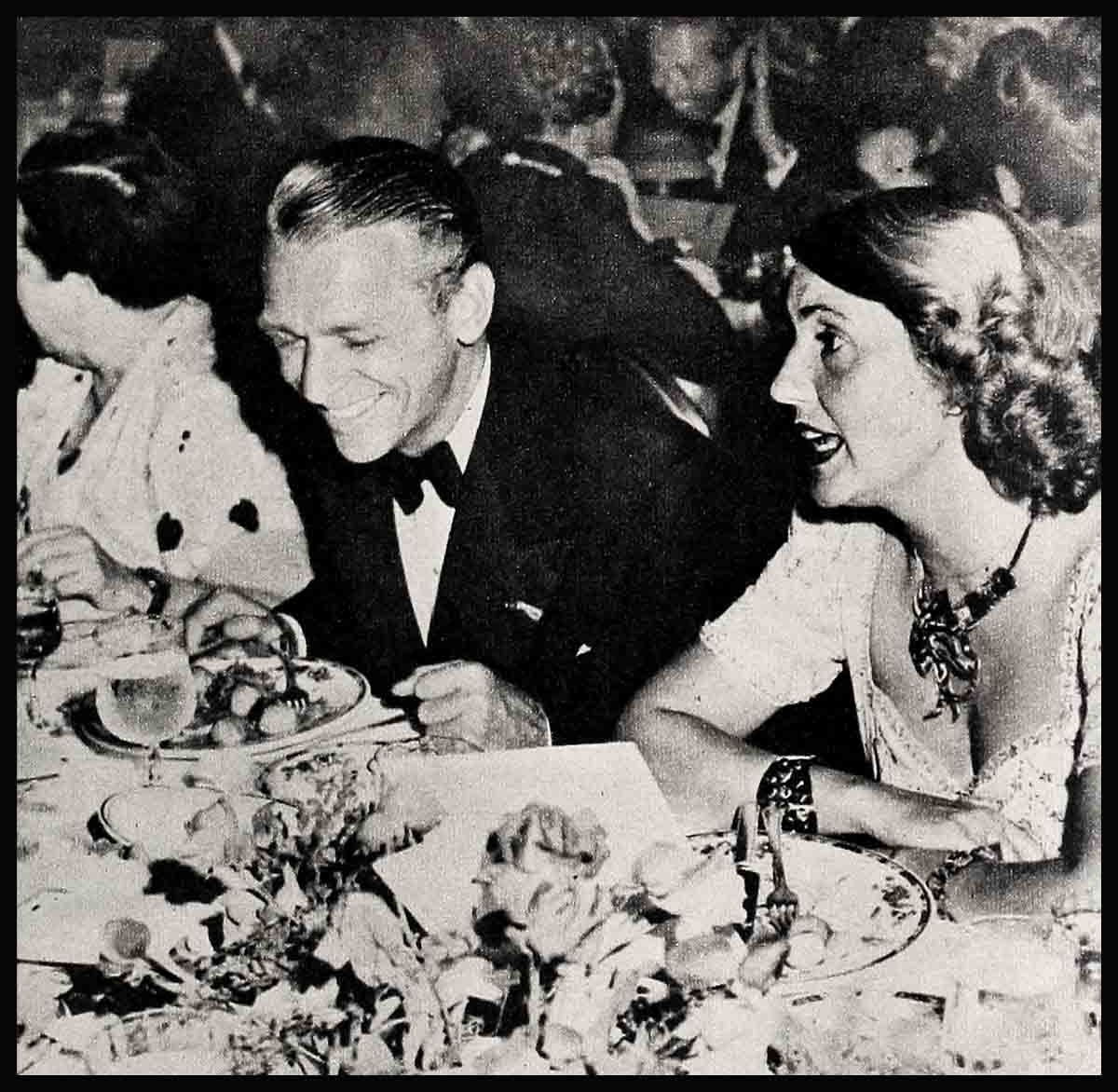
Parties, Parties, Parties
It come on pink paper, this invitation, looking for all the world like an old theatrical handbill. There was the same sense of excitement about it, too. Which, of course, induced the Wangers’ guests to arrive in a gay mood. And their gay mood was sustained because the food, drink and music were excellent and the tent which covered the back lawn was well ventilated. However, the piéce de résistance of the evening was Portland Mason. Sixteén-months-old Portland sat in her high chair, helped herself carefully to the white meat of chicken and played with any object that was left on her chair tray. She smiled at all who stopped to talk to her, too, until this party concluded early the following morning. For young Miss Mason keeps the same hours as her parents, goes wherever they go and does, more or less, whatever they do. I find this as amazing as Ethel Barrymore did when she called out, horrified, to Pamela Mason, that Portland was dipping her finger into a tired old high-ball. Whereupon Pamela laughed and assured Miss Barrymore there was no cause for alarm since Portland wouldn’t drink it. I really wouldn’t know. Pediatricians really don’t know either, apparently. For the eminent doctors in California and New York who have examined Portland can only exclaim over her general well being.
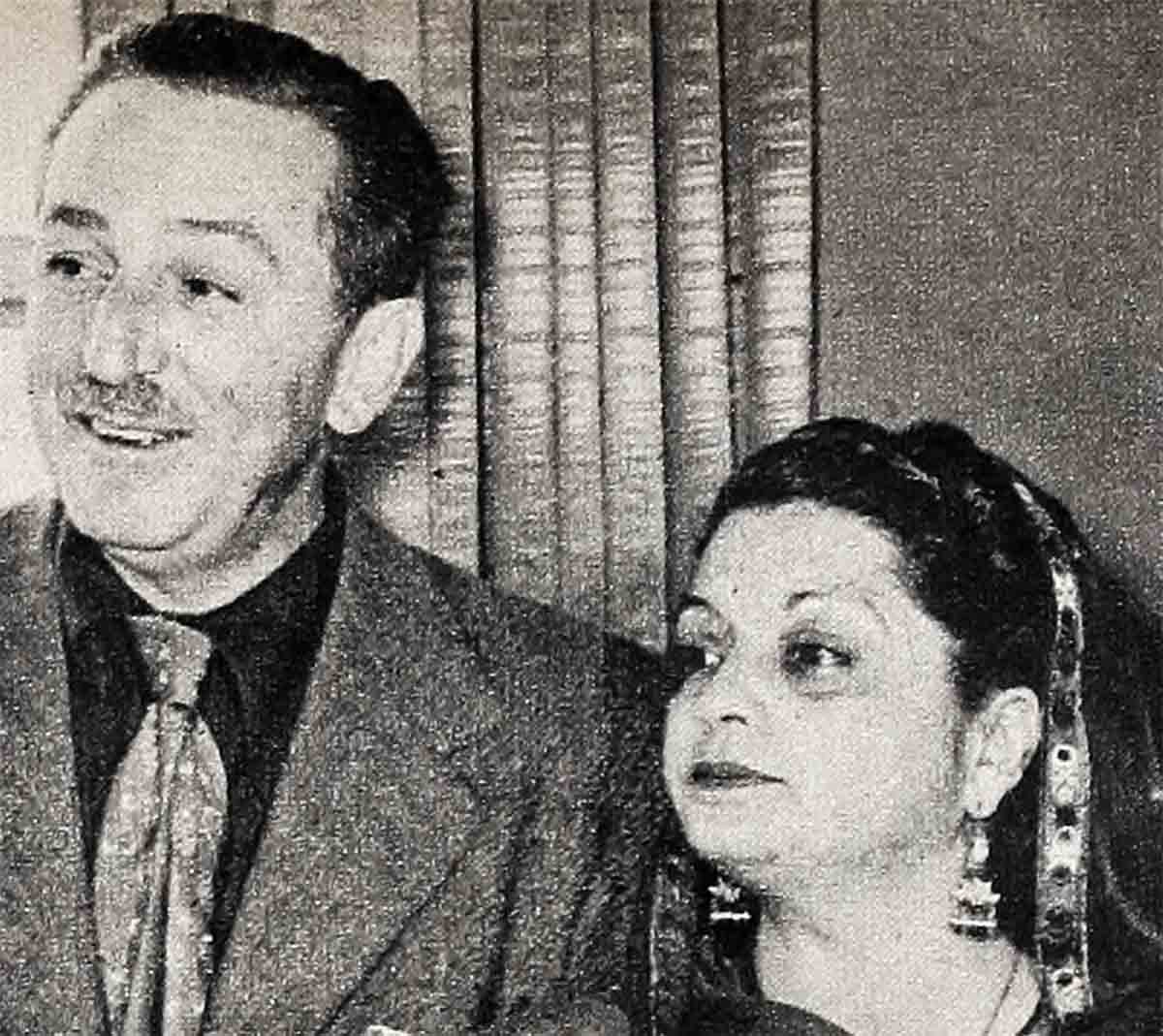
Hollywood parties . . . That, the world over, is a phrase to conjure curiosity and the imagination. With reason.
For Hollywood parties, year in, year out, are typical of the current social scene. The style of Hollywood parties has changed many times, but always to reflect the growing pains of this community which, in a handful of years, has, developed from an outlandish and often vulgar place into one of the most charming and cosmopolitan centers in the world.
In the beginning Hollywood parties were wild. Those were the days when you were asked to a party the same day it, was given. No preparation was involved. A party simply meant a lot of people getting together with plenty of liquor. It was for all the world like the old mining days.
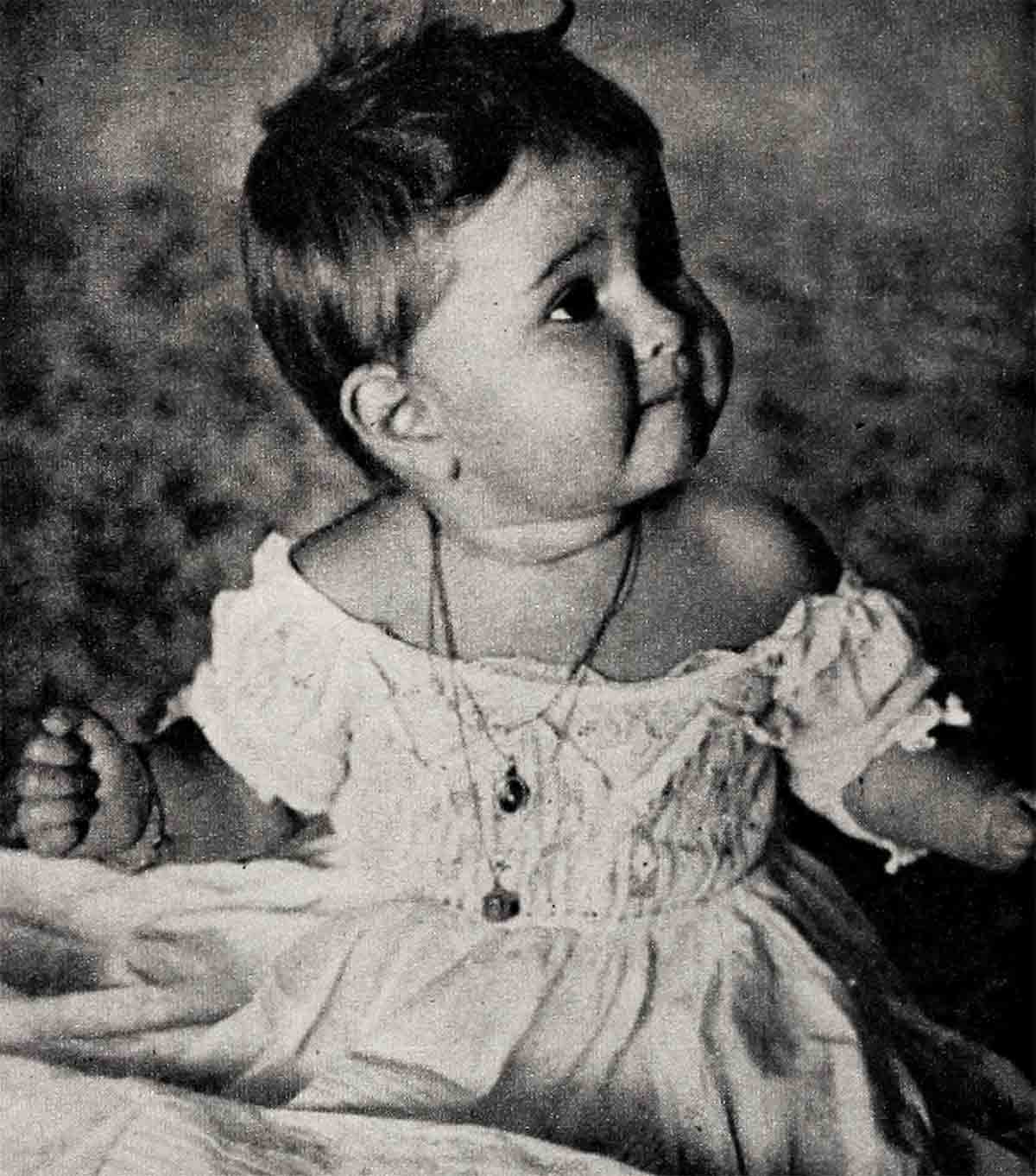
Then the pendulum swung in the opposite direction and a party was only as good as the crazy idea that prompted it. Outstanding in the early ’30’s were the parties Carole Lombard, then Mrs. William Powell, contrived. One, I remember, was inspired by an obstetrical ward. We came dressed as nurses and doctors. We dined at an operating table. We ate with surgical instruments. We were served by waiters wearing rubber gloves. It was most uncomfortable. But it was also the talk of the town.
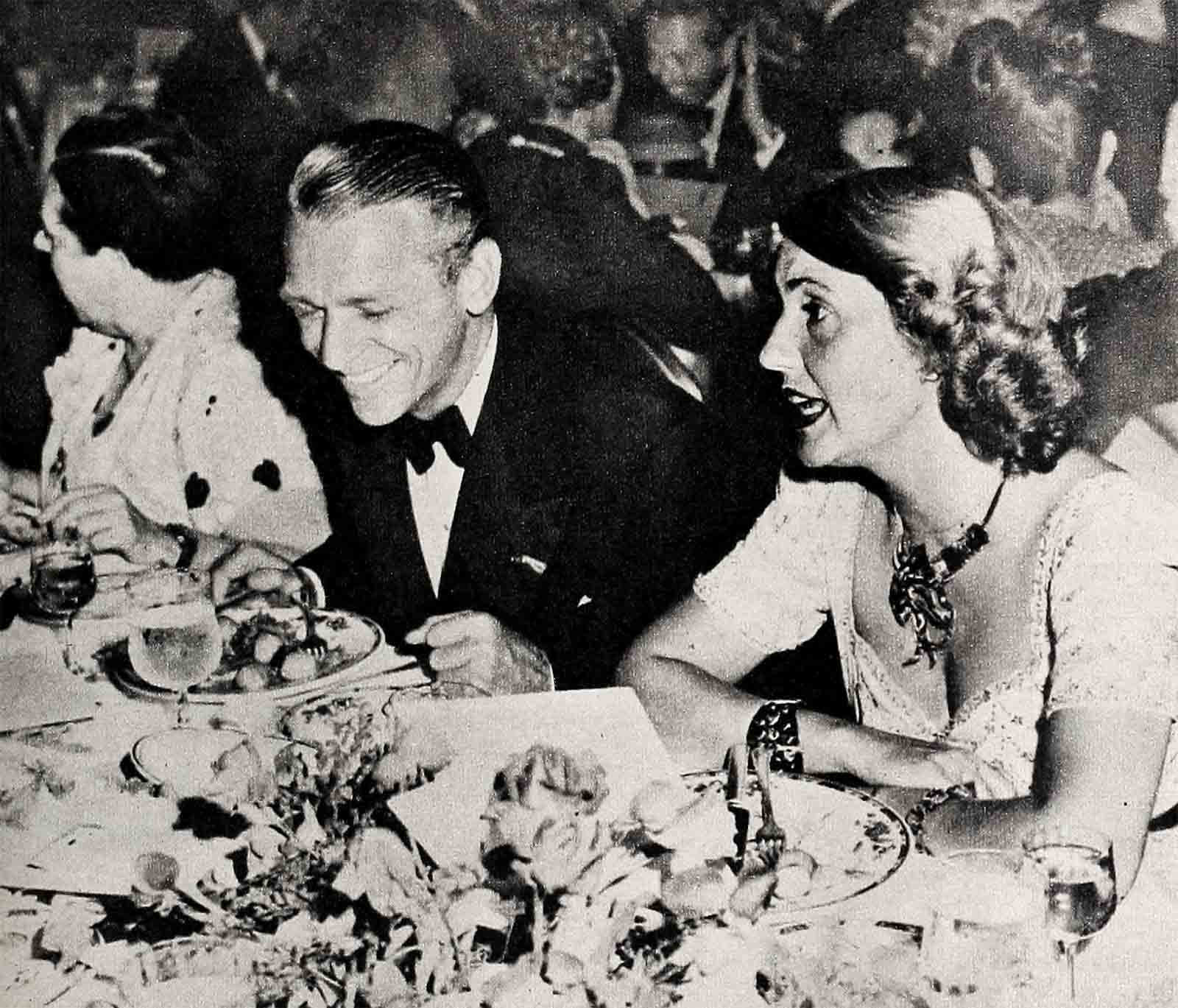
In those days parties had neither elegance nor charm. Except at Pickfair. The lovely hilltop house of Mary Pickford and Douglas Fairbanks Sr., then was the town’s social capitol. It was at Pickfair that the Duke of Alba and Prince George and other eminent visitors were entertained. I remember Joan Crawford’s panic when, shortly after she married Doug Jr., she was invited to a party at Pickfair. She had heard about the rooms filled with flowers, orchid trees in the foyer with its floor of tessellated marble. She had heard, too, about the gold dinner service. (Those were the days before taxes were so high.) Only a year or two before, Joan had been Hollywood’s Hey Hey Charleston girl. She desperately wanted to be a credit to young Doug. And she was, too. Because she’s attractive, of course, and during her first few Pickfair visits she kept quiet, too deathly sick with nervous nausea to speak.
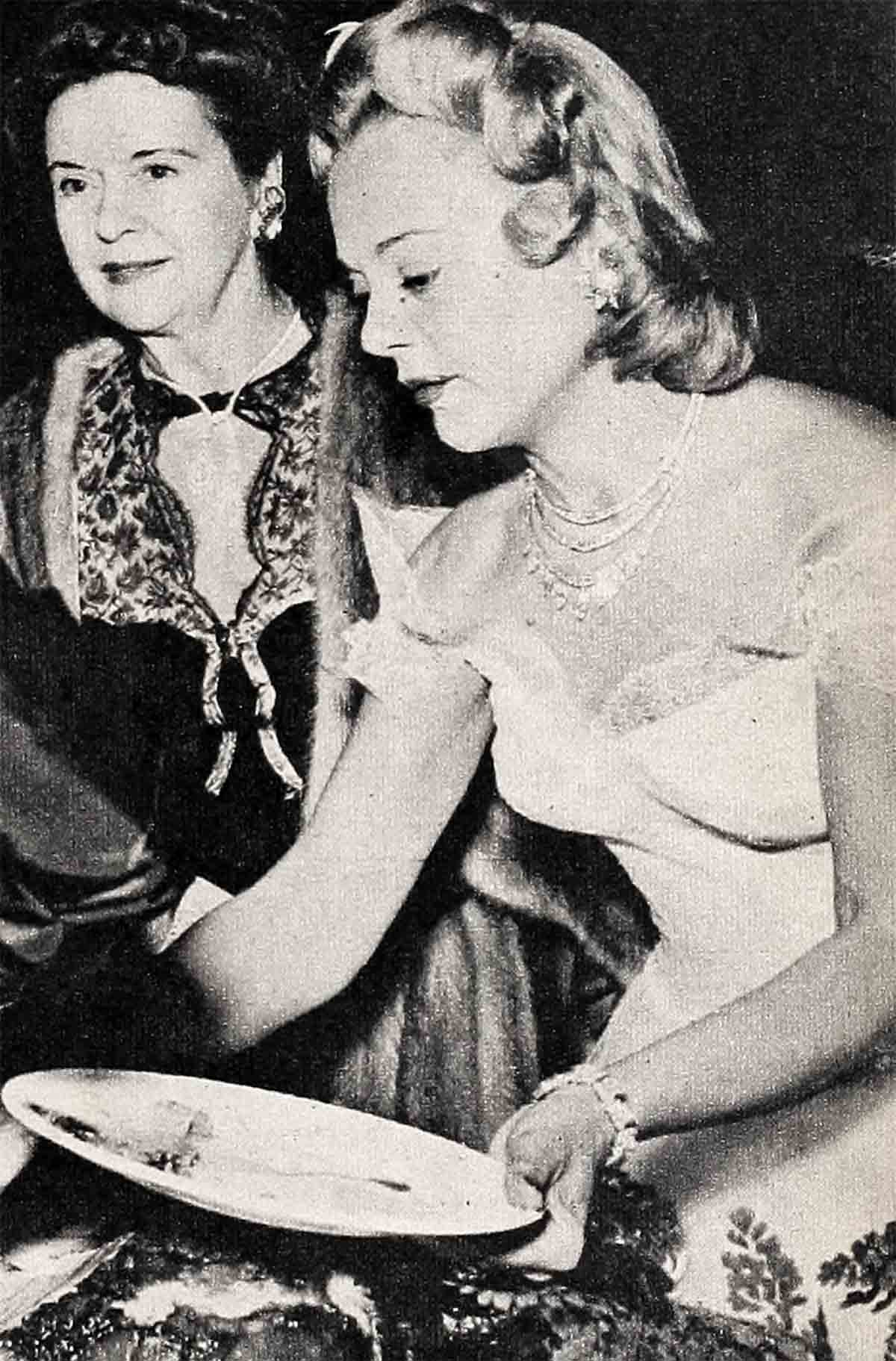
At the smaller Hollywood parties—dinner parties of from twelve to twenty people—movies used to provide the evening entertainment. No starry home was complete without a projection booth and a full size screen. Sam Goldwyn still shows movies after dinner. When you go to dine with Sam and Frances, you know, in advance, that the picture Sam will show will have been made by someone else—and that it won’t be too good. It’s Sam’s subconscious I’m sure that makes it impossible for him to choose a rival’s superior product.
To ask the stars to perform at parties was unheard of until I did it. Having decided it was a crime to let Hollywood parties continue so much less exciting than they might be—because everyone was so precious about asking the home talent to perform—I turned rebel.
It was in the late 1930’s and I was staying with Constance Bennett. Big parties now were The Thing. A tent was erected in the garden to accommodate the bar, the buffet and the tables since most houses just couldn’t accommodate the two or three hundred guests called for at a party, Hollywood size.
“Are you really going to ask people to perform?” Connie asked nervously as the party was being planned. “You really don’t think they’ll mind, Elsa?”
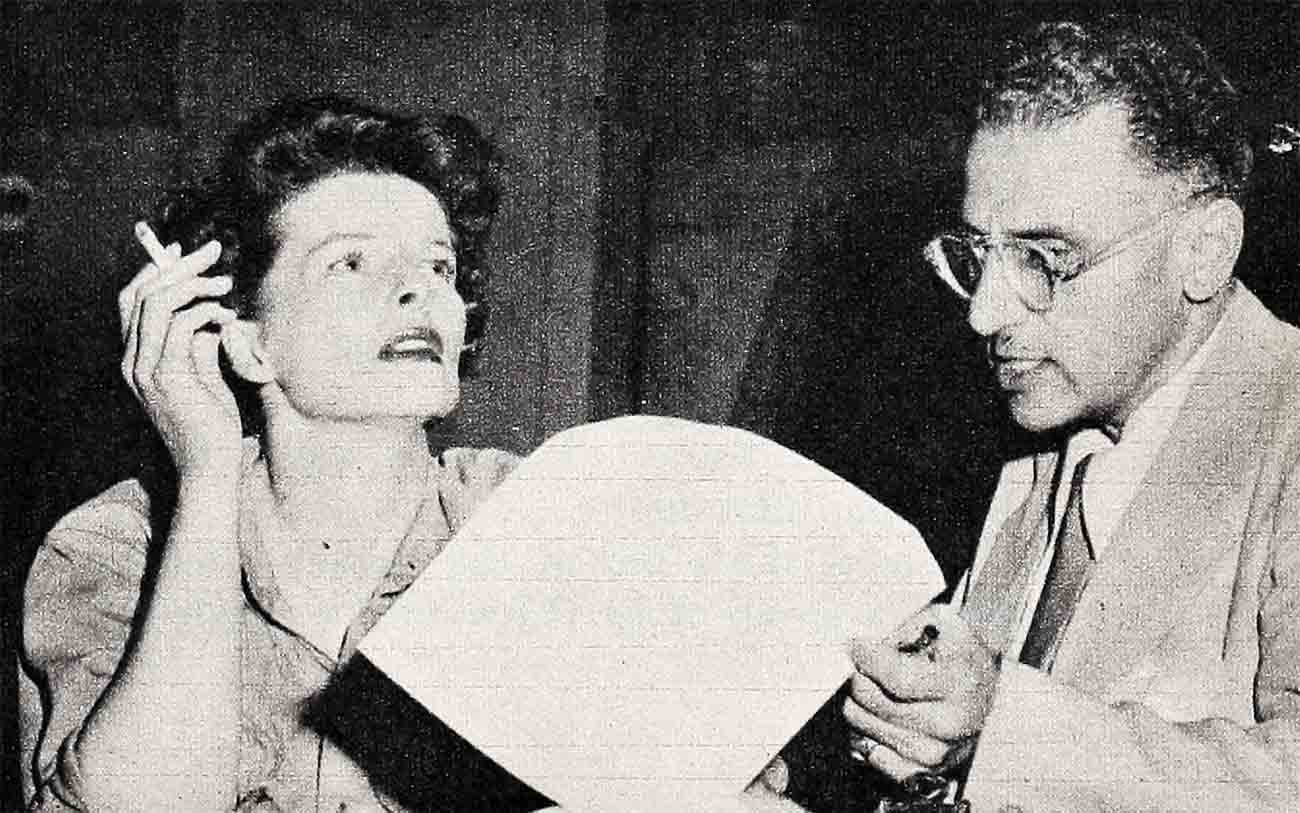
I shook my head. “They wouldn’t be actors and actresses if they weren’t exhibitionists at heart and you know it,” I said. “Besides, party participation is what makes parties a success. Wait and see.”
She saw too. Edgar Bergen, I remember, was fairly new to Hollywood. He and Charlie McCarthy fascinated our guests. So did Bea Lillie, who sang. For the first time I asked both society people and stars. And the stars had as much fun watching the blue-bloods as the blue-bloods had fun watching the stars.
Successful parties aren’t accidents. They’re the result of work and plans. And, above all, they must in some way reflect the host, the hostess, or both. I remember too well when Hollywood parties failed to do the latter, to become boring and monotonous.
This was before 1942. It was the thing then to plan parties weeks ahead. You telegraphed your guests—a good party included one hundred guests or more—stating the night you wished them to dine and asking them to telephone your secretary whether or not they would be there. You knew when you arrived in Hollywood where you would go Saturday after Saturday. If you didn’t go to Errol Flynn’s on the 6th, Norma Shearer’s on the 13th, and so on, you stayed home. No one else would plan anything for these nights staked out so far in advance.
All the parties were the same. Michael Romanoff, as caterer, provided all the food and drink. The same tent man put up the tent. The same waiters passed the same drinks, the same food. And you ate with the same silver from the same china.
It was about this time that Barbara Hutton married Cary Grant and Douglas Fairbanks Jr. married Mary Lee Hartford. The parties given at these homes were the antithesis of those I’ve described. They were, first of all, comparatively small. Secondly, very few stars were among their guests. The Grants and Fairbankses entertained instead California socialites, diplomats, visitors, with and without titles, from England and Europe. These parties were undeniably charming and appreciated. But again and again a diplomat, a Duchess or a Count would complain, “I was so disappointed. I had hoped, of course to see some stars.” It’s sheer nonsense for any host or hostess to think a Hollywood party, however elegant, can be complete without stars.
In Hollywood all you have to do is announce merely that Walt Disney will be at your party and your party will be jammed. Great stars and big producers have the greatest admiration for the quiet man who has blessed the screen with the beauty of “Cinderella” and “Snow White.”
Sonja Henie came into her own as a war hostess. Sonja knows the magic of presents. Always at her parties there was a huge table with crocks of caviar, magnums of champagne, baskets of rare fruits and candies, gifts galore. These went to guests as door prizes, for games, for dancing. Any one of the stars present could have gone out and bought any one of the prizes without difficulty or extravagance, of course. But a present—that was different.
Other things which contributed to the success of the Henie parties were the imagination, planning and work which both Sonja and her mother put into them. Mrs. Henie frequently made the dessert herself. It never fazed Sonja to have lobsters or pheasants or quail flown out from New York. It never fazed her either to pay a small fortune for the best dance band in the land. Sonja practices the good old Norwegian adage: “If it’s going to be Christmas let it be Christmas.”
Now for the man who gives the best parties in town. Others may give bigger parties and more elaborate parties. But it’s at George Cukor’s that you have the most wonderful time. George, with his great gift for people, knows whom to bring together. And whoever he invites is sure to accept. Greta Garbo goes to George’s parties. And listens, spellbound, with Marlene Dietrich, Ethel Barrymore, W. Somerset Maugham and Katharine Hepburn, to Lionel Barrymore, one of the greatest raconteurs in the world, tell a simple story, so simply, that it becomes enchanted.
Through the years, as you can see, a great many things have gone into making Hollywood parties memorable. But it remained, this spring, for Joan Bennett and Walter Wanger to present as a piéce de résistance a baby who, from her high chair, presided as a guest of honor until the small hours of the morning.
THE END
—BY ELSA MAXWELL
It is a quote. PHOTOPLAY MAGAZINE SEPTEMBER 1954




